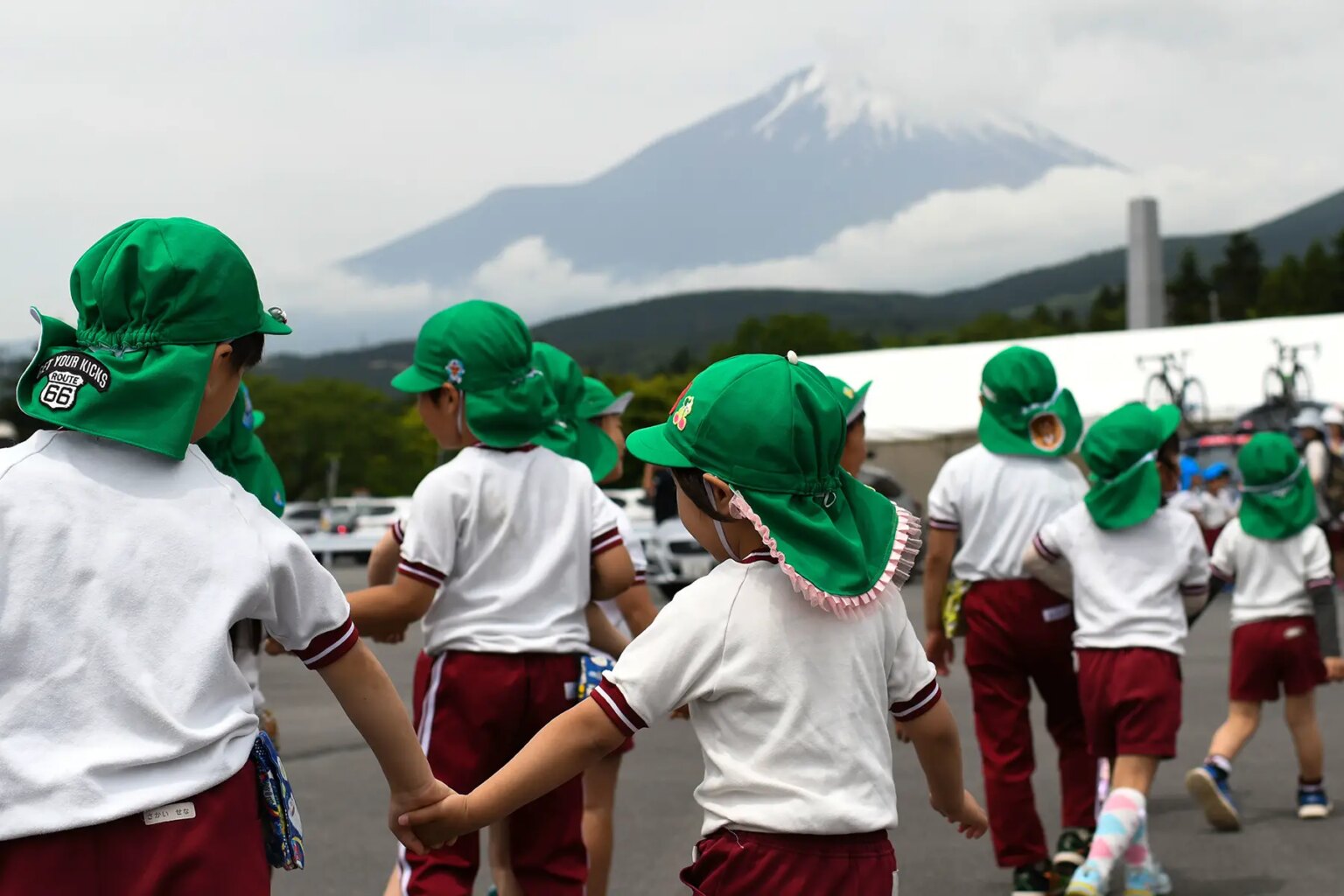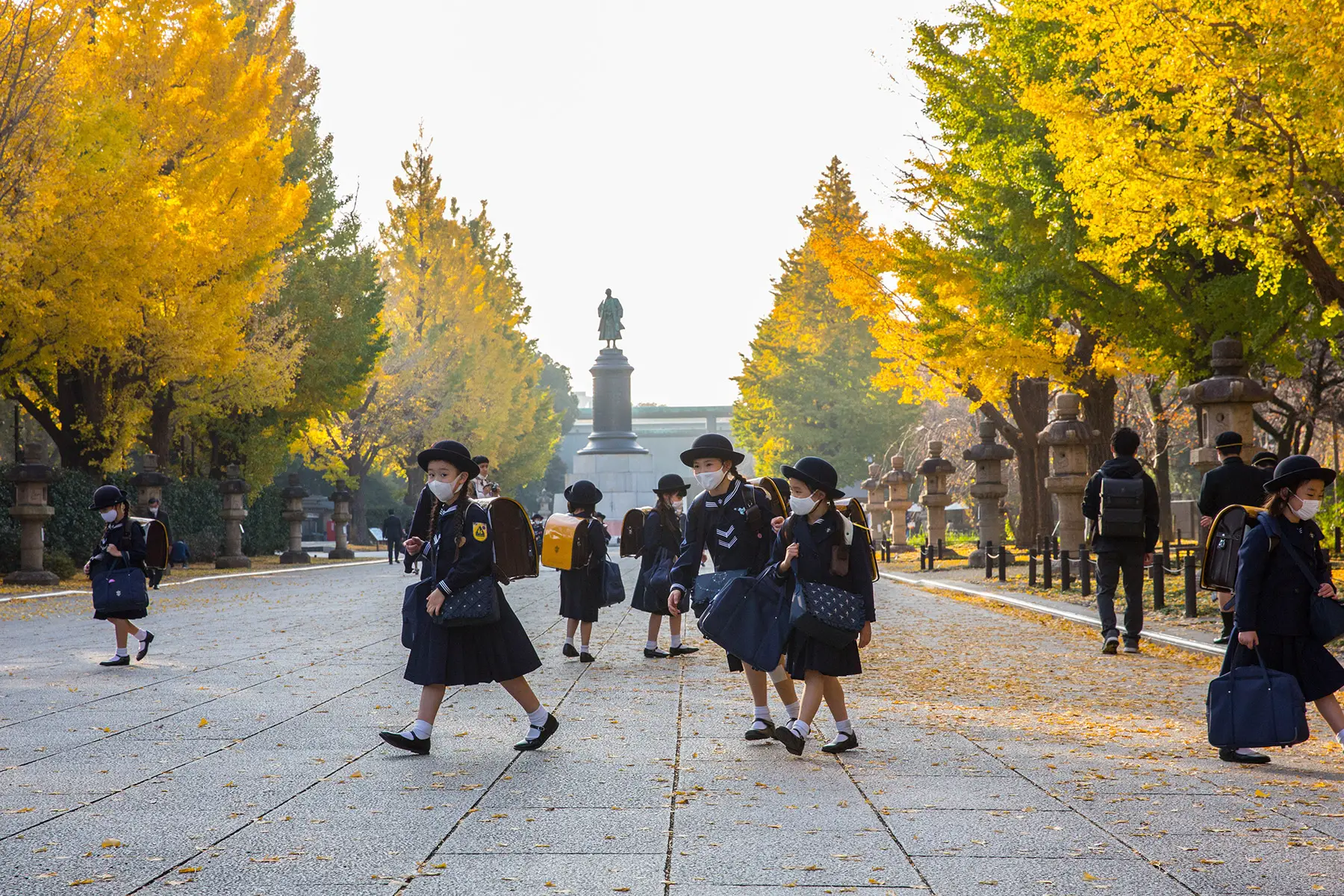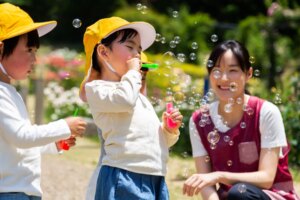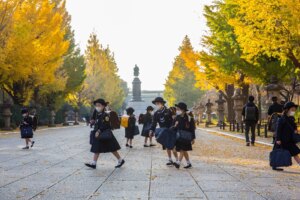The International Baccalaureate (IB – 国際バカロレア) is perhaps the best-known of the international education boards, and many schools offer it in Japan. However, you can also enroll your children in a specific national curriculum, such as an American or British school.
Furthermore, students can benefit from multilingual programs in Japanese international schools (インターナショナルスクール) that will allow them to thrive in the global job market.
Check out the topics below to find the type of international school in Japan that best suits your children’s needs:
The Japanese education system
High standards, an intensive curriculum, and a strict focus on academic excellence define the Japanese education system. Many students will go to cram school from an early age to ensure they land a place at the best secondary schools and universities.
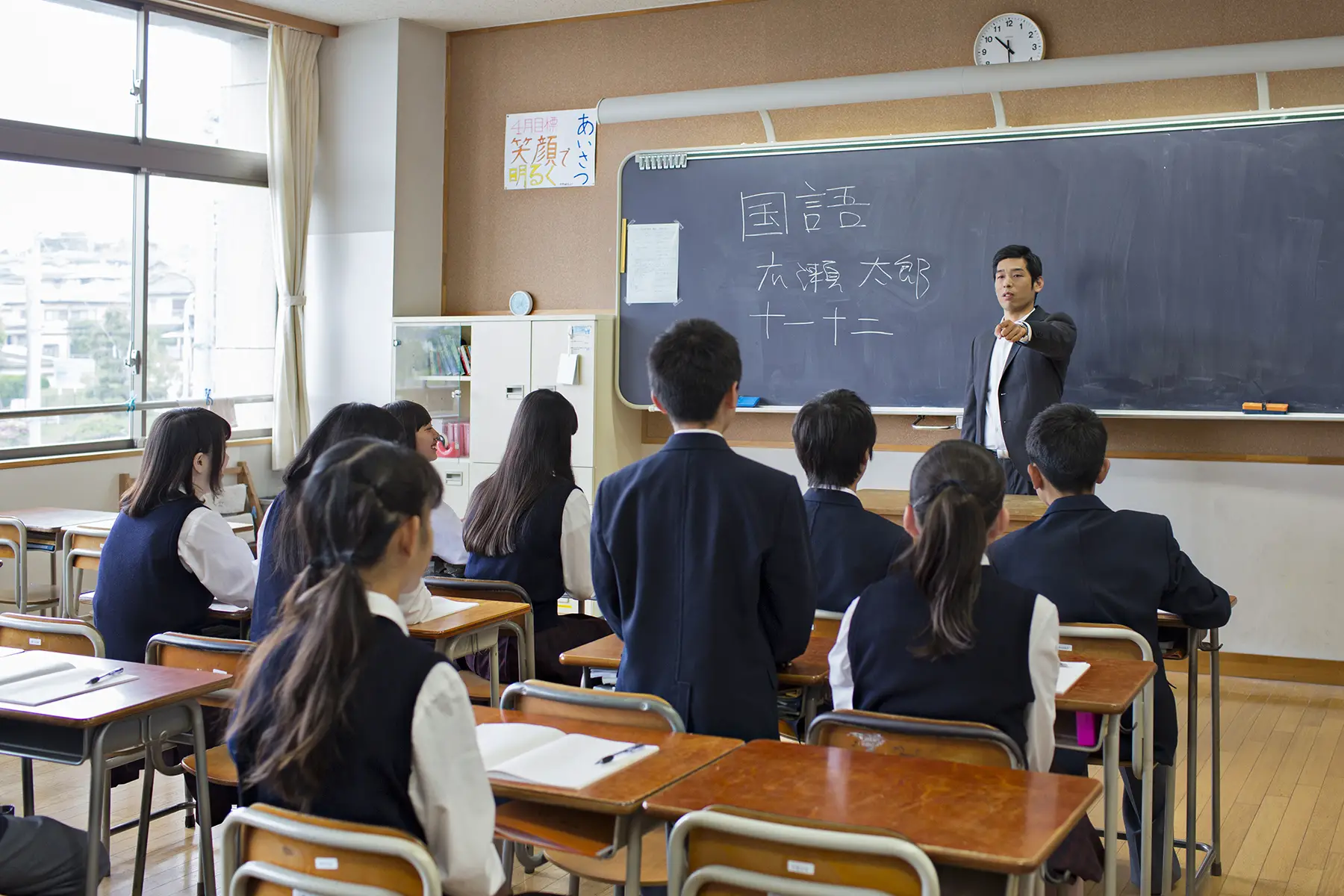
Consequently, Japanese students are frequently among the highest performing in the Program for International Student Assessment (PISA) conducted by the OECD approximately every three years.
While the education system in Japan gives students the academic credentials to attend the world’s top universities, it has received criticism in the post-industrial era for not developing students’ creativity and critical thinking skills.
For this reason, many expats send their children to international schools, which typically prepare pupils for the realities of the modern, global world.
Structure of the education system in Japan
Education in Japan is compulsory from age 6 to 13, which includes elementary school and junior high school. Kindergarten from age 3 to 5 is optional, though most parents will enroll their children in some preschool program.
Likewise, teenagers are not required to attend senior high school or university, but most make use of these opportunities. Typically, more than 90% of Japanese school-age residents will finish secondary education, while around 60% enroll in some form of tertiary studies.
In 2021, around 2.6 million students registered at universities nationwide. There does not seem to be a significant disparity between men and women at the university level.
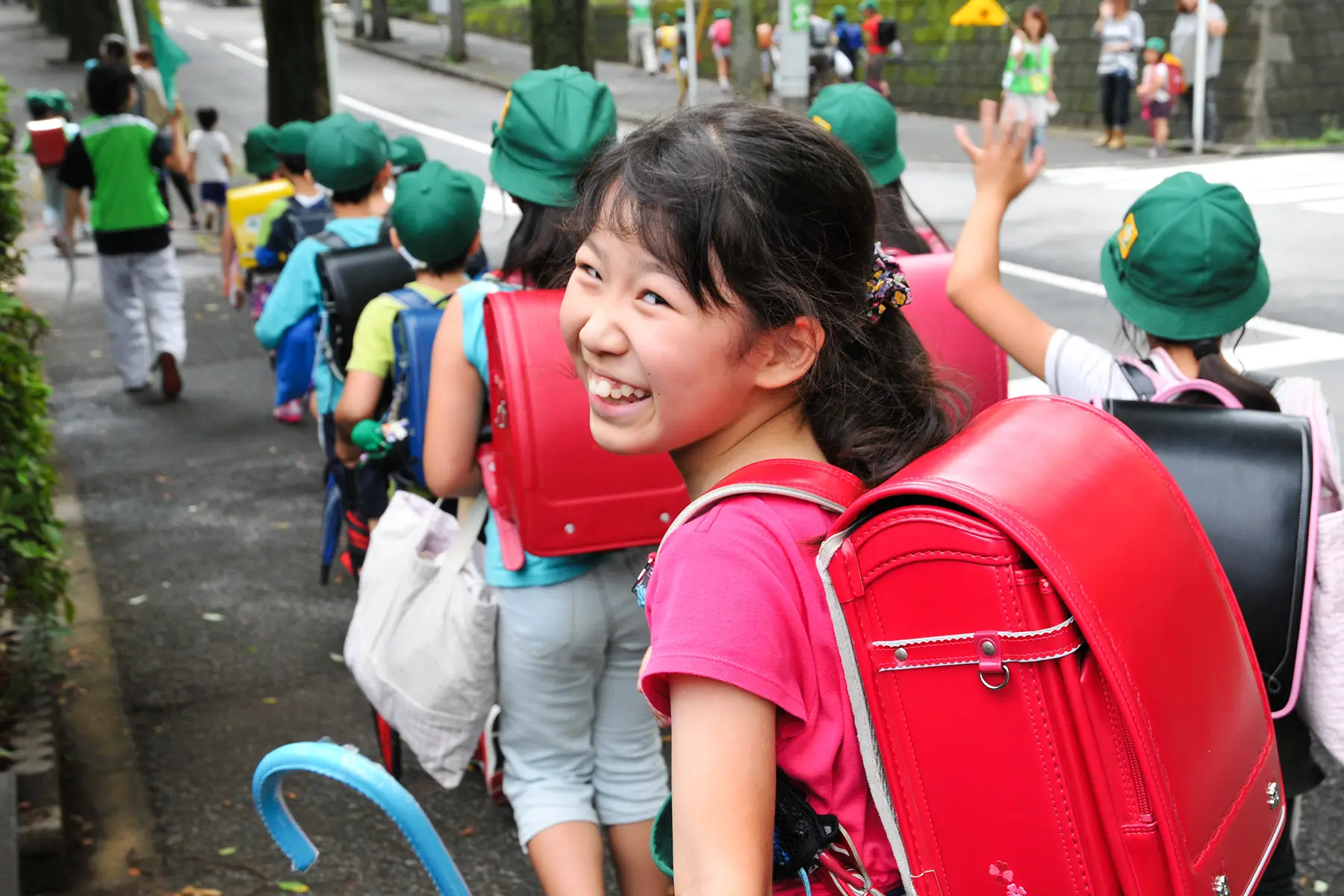
Japanese schools, covering all ages, exist in both the public and private sectors.
Public schools are government-funded and have a standardized curriculum; the Ministry of Education, Culture, Sports, Science, and Technology (MEXT – 文部科学省) creates and assesses the curriculum. Class sizes may be large in public schools, with 30 to 40 students, although at the elementary level, often multiple teachers are assigned to each class.
Private schools have complete autonomy over what they teach and how much they charge in annual fees and extracurricular expenses. Class sizes tend to be much smaller at these institutions, and the curriculum is more curated to an individual’s needs. Admission to private schools is also likely to be more competitive.
International schools in Japan
Japan has the third largest economy in the world and has attracted more than 3 million expats by the end of 2022. In turn, the international school sector grew rapidly, with close to 70 education institutions across Tokyo and Kansai.
These schools teach most lessons in English, with some offering programs in French, German, Japanese, and other languages.
However, this number does not include smaller schools in mid-tier cities, such as Hiroshima and Sendai, or in regional areas, like Gumma and Aomori. Some institutions run from pre-kindergarten to high school, and others focus on specific age groups.
The only schools that can award diplomas are the ones teaching the national curriculum according to the Japanese School Education Law.
Technically, this may prevent international school children from applying to certain Japanese high schools and universities without these diplomas from elementary or junior high schools.
Consequently, some parents exploit a loophole by sending their children to public schools for just a few days, after which the school is required to give them a diploma.
What’s the difference between international and public schools?
At international schools:
- English is the primary instruction language
- The annual tuition fees are expensive. However, the cost has declined in recent years; the average in Tokyo is now around ¥2 million per year, whereas in Kansai, it’s closer to ¥1.5 million.
- The student body is diverse (i.e., many nationalities and languages)
- Each school decides its own curriculum and usually follows one of the internationally certified school boards, including:
- International Baccalaureate (IB)
- Cambridge International Curriculum
- Advanced Placement (AP) program
- International General Certificate of Secondary Education (IGCSE)
- Council of International Schools (CIS)
- East Asia Regional Council of Schools (EARCOS)
- British Columbia Curriculum (BCC)
- School properties may be bigger with better facilities, offering more extracurricular programs, including music, performing arts, sports, community service, and international field trips
Each education board oversees its own operations in Japan. That said, MEXT does provide guidelines and regulations for international schools to follow.
Types of international schools in Japan
Below are some of Japan’s different international school boards and where they operate.
International Baccalaureate (IB)
The IB is one of the most popular styles of international school education – there are approximately 7,800 IB programs on offer globally across more than 5,600 schools in 159 countries.
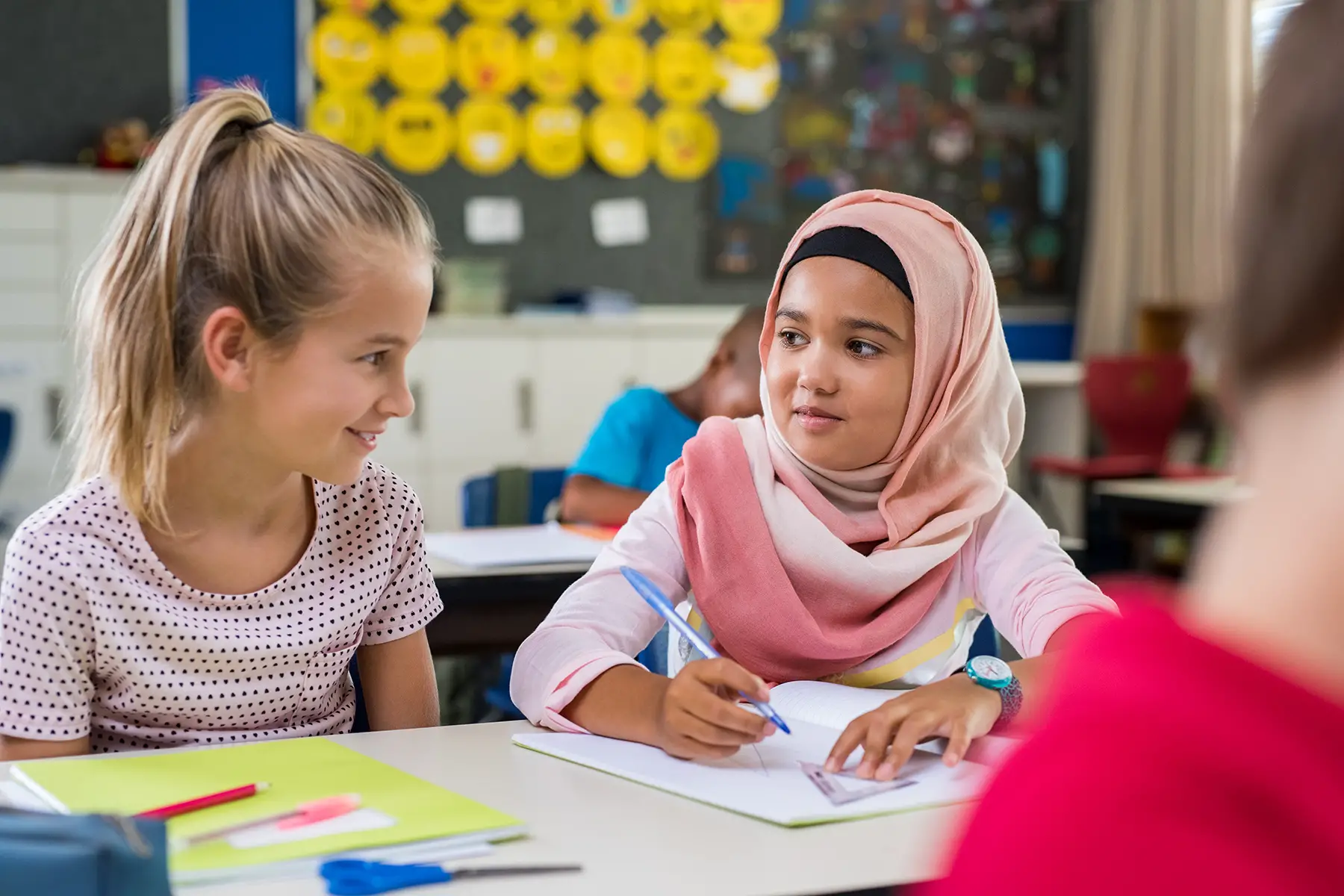
IB schools in Japan offer at least one of four programs, separated by age group or study goals:
- Primary Years Program (PYP): Elementary school students
- Middle Years Program (MYP): Junior high school students
- Diploma Program (DP): High school students
- Career-related Program (CP): High school students with specific career prospects in mind
The IB curriculum is student-centric, encouraging learners to play an active role in their education and celebrating their individual talents. A lot of the programs are cross-curricular, meaning anything a student learns in one subject will be directly applicable to other topics and the world beyond school.
These subjects are typically categorized as follows:
- Design and technology
- Individuals and societies
- Language acquisition
- Mathematics
- Physical and health education
- Sciences
- Studies in language and literature
- The arts
Teachers assess students at all levels of IB education to ensure they are progressing with the curriculum.
Diploma Program (DP) and Career-related Program (CP)
Learners in the Diploma Program will be externally tested. Schools assess students in the Career-related Program on four core elements:
- The reflective project
- Service learning
- Personal and professional skills
- Language development
High scores in DP and CP programs will ensure students have every opportunity to attend the world’s top universities.
Many of Japan’s international schools use the IB program, with fees ranging from around ¥1.3–4 million per year. Renowned IB schools include:
- Aoba Japan International School
- Deutsche Schule Kobe International
- Osaka YMCA International School
- Tokyo International School
American international schools and Advanced Placement (AP) programs
Japan’s relationship with the United States (US) goes back to the mid-1800s, when Commodore Matthew Perry of the US Navy encouraged the country to open its borders, ending 250 years of national isolation.
Since then, the American population has grown in Japan, and schools have been established based on the American Common Core curricular standards.

The American international school curriculum is similar to the International Baccalaureate, placing a high value on the student experience and offering regular cross-curricular classes. These may include core subjects like mathematics, English, sciences, and social studies or more creative endeavors, such as music and arts.
Assessments will include those used in the American schooling system, such as the Stanford Standardized tests tracking student development throughout their academic journeys and SATs taken at the end of high school as part of university entrance applications.
Some may also include Academic Support for Kids (ASK) Programs for students performing below grade level or struggling to communicate fluently in English.
Japan’s American international schools tend to cost around ¥2 million per student annually. They accept students of all nationalities, not just American citizens.
Some of the top-rated schools include:
- Axis International School
- The American School in Japan (ASIJ)
- Tokyo YMCA International School
- United School of Tokyo
The American School of Japan also offers an Advanced Placement (AP) program for high school students.
Students who take AP exams (recognized by universities) receive credits for their college applications. The program develops students’ inquiry, research, collaboration, and writing skills to prepare them for the next step in life.
British international schools
Japan’s international schools also use British curriculums mainly the Cambridge International Curriculum (CIC) and the National Curriculum of England.
More than 10,000 schools in 160 countries use the CIC, which caters specifically to students learning in a multicultural environment. It includes four stages, which lead seamlessly into one another:
- Cambridge Primary
- Cambridge Lower Secondary
- Cambridge Upper Secondary
- Cambridge Advanced
The curriculum uses the spiral approach, introducing key concepts repeatedly throughout the different units, each time adding more information or exploring the learning goal with new applications.
It’s often combined with the Cambridge Global Perspectives Program, which helps students build critical thinking, research, and practical skills they can apply to the real world.
Assessment typically follows standardized British testing: International General Certificate of Secondary Education (IGCSE) and A Levels, which are subject-specific.
Examples of international schools that use the CIC include:
Some British schools follow the National Curriculum of England closely, such as the British School in Tokyo, which has more than 1,000 students of 65 nationalities.
The program runs from the early years of development through to high school with IGCSE and A-level assessments.
Annual fees for British schools in Tokyo are generally between ¥1.3–2 million.
Canadian international schools
Canadian curricula are also popular in Japan. At Bunka Suginami Canadian International School, students who enroll in the Double-Diploma Program study the British Columbia Curriculum (BCC).
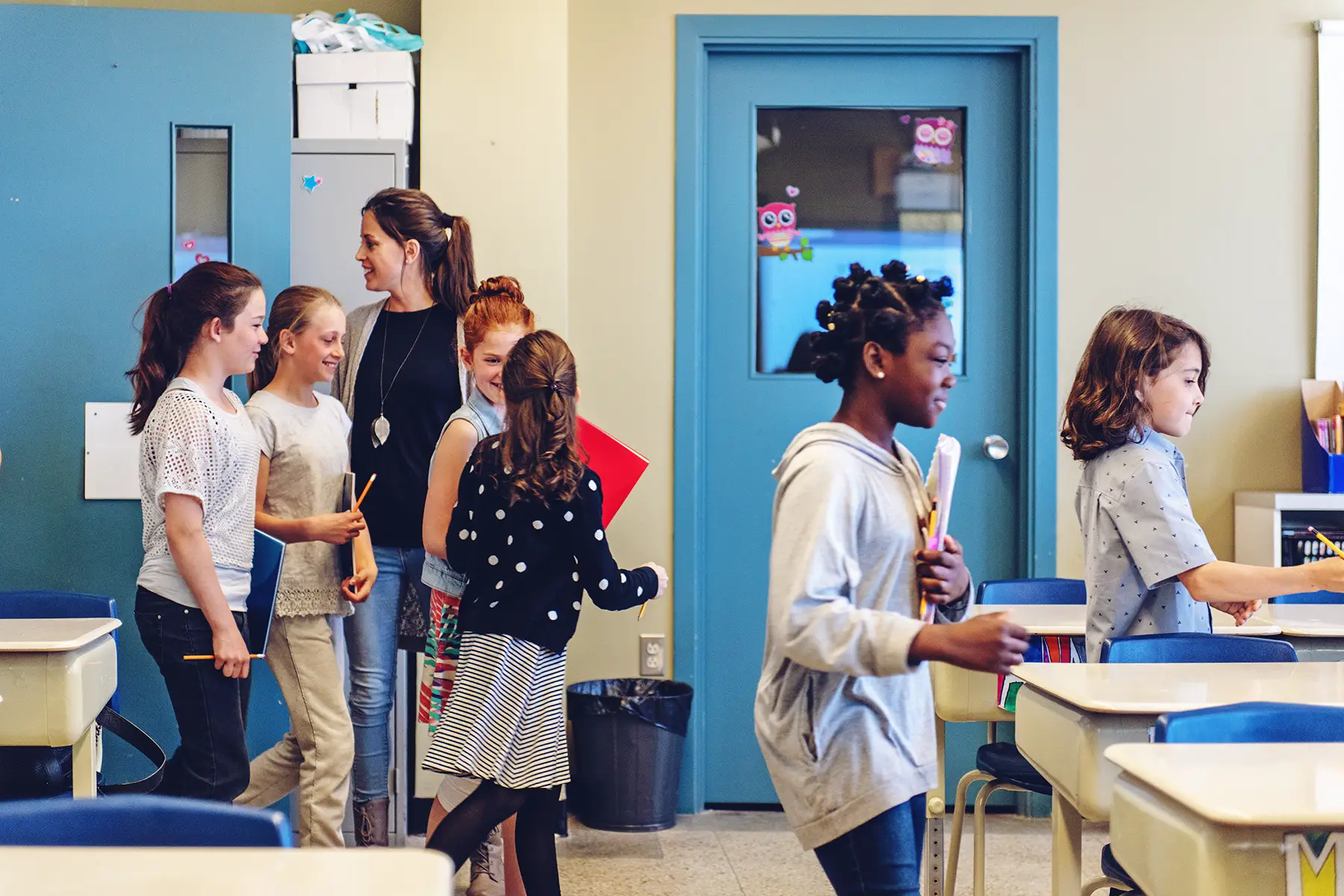
The BCC is highly regarded worldwide, with Grade 10 students consistently scoring well in mathematics, reading, and science assessments.
The Canadian International School Tokyo‘s mission is to create global citizens through an education program that combines Canadian and international curriculums.
In comparison, the Canada Academy in Kobe brings together Canadian teaching principles, Japanese cultural education, and the International Baccalaureate.
Japanese-fusion international schools
Some of Japan’s international schools use adapted forms of the local curriculum.
The New International School of Japan combines Scotland’s Curriculum for Excellence with a more Japan-centric approach to teaching.
Diversity is celebrated with a strong focus on language acquisition. Among its goals are:
- Academic and social skills in both English and Japanese are developed throughout the curriculum
- Every child becomes bilingual or multilingual over time
- Students can also learn Mandarin Chinese, the world’s second-most-spoken language
- The home language(s) of each student are celebrated, encouraged, and supported
The Kobe Bilingual School (KOBILS) holds mainly English immersion courses but also offers programs in Japanese for students of all nationalities.

The curriculum is a hybrid of Scotland’s Curriculum for Excellence and Japan’s national curriculum, mainly focusing on social studies and ethics in the latter. To make it truly international, it incorporates elements of the US, Australian, English, and Finnish education systems.
Prices at these schools vary. KOBILS is around ¥800,000 per year, while the New International School of Japan is around ¥2 million.
Religious schools
Some schools may incorporate Christian teachings into their education frameworks, such as Saint Maur International School in Yokohama or St Michael’s International School in Kobe.
Though the role of religion at these schools isn’t as strong as when they were founded in the late-19th century – they are now open to students of all faiths – Christianity still dictates their core principles. They have on-site chaplains and halls of worship and observe Christian holidays and celebrations.
Should you send your child to an international school in Japan?
How do you decide to send your child to an international school? Below is a list of the main advantages and disadvantages of international education in Japan.
Advantages
- Classes sizes are often small with a high teacher-to-student ratio
- IB and national curriculum schools make it easy for students to transition to new schools when relocating
- International schools are home to a global community of teachers and students, providing culturally diverse learning opportunities
- More extracurricular activities and better facilities, often including large green areas and sports facilities
- Parents can usually communicate with the school and other parents in their native language
- The chance to receive internationally recognized qualifications
- There is usually a strong emphasis on languages and bilingualism, especially Japanese, as well as other languages that are valuable in an increasingly globalized world, such as Mandarin Chinese, French, and German
Disadvantages
- Entry to international schools can be competitive and depends on the child’s academic abilities
- Most of the top international schools are in Tokyo and Kansai, but there are a growing number in regional Japan
- Though declining, international school fees in Japan are still high. However, your employer may be able to subsidize the fees if you are relocating for work.
- Your children can grow up in an international bubble, which makes it harder to integrate into Japan’s homogenous society after they’ve graduated
How do you choose an international school in Japan?
If you decide that an international education is a good fit for your child, the next question is: how to pick one?
- Academic results: for secondary education, it’s also worth checking the percentage of students who continue to higher education
- Admission and enrollment procedures: some schools require academic and language testing or personality-focused assessments before registration
- Education system: decide which curriculum suits your child best and whether you can afford the annual fees. Alternatively, find a school following the national curriculum of the country you plan to return to before your children graduate.
- Extracurricular activities and facilities: the clubs, activities, and outings on offer can vary greatly. Some schools also provide summer camps and cultural courses, while others focus more on field trips and sports programs.
- Fees: can range from around ¥800,000–4 million per year. Pick one that fits within your budget, or look at scholarship (奨学金) options.
- Location: Tokyo has around 50 international schools, meaning no matter where you’re based in the city, you’ll have access to good international schooling. The Kansai region is centered around three major cities – Osaka, Kyoto, and Kobe – which are connected in one urban sprawl. You have at least 19 different schools here, so a couple should be within commuting distance of your home. Nagoya, a large city in central Japan, also has various international schooling options.
- Primary languages spoken: some schools offer bilingual education; in others, additional languages are distinct subjects
- Qualifications available: sometimes, students can study for different certificates in the same school, particularly in preparation for higher education. Top universities will recognize most international school qualifications in Japan.
- Reputation: school websites, word of mouth, and the international school database are good resources
Financial aid and scholarships for international schools in Japan
International school scholarships are available in Japan. The financial support schools offer is usually based on academic excellence and gross family income, while others have corporate contribution plans instead.

Here are some examples:
The Global Indian International School in Tokyo has a Global Citizenship Scholarship for Grade 11 and 12 students with exceptional exam results in Grade 10.
The Sadako Ogata Merit cum Means Scholarship is for young students whose gross family income is between ¥3 million and ¥12 million.
There’s also a Hideki Yukawa Global Skills Scholarship for all school-age students with exceptional talents in technology fields. Apply for these and other scholarships through the school’s website.
Fukuoka International School‘s International Mindedness Scholarship is available to students in Grades 10-12 with a global mindset and an outstanding academic record.
The annually awarded scholarship covers up to 100% of annual tuition fees for three years or until graduation. Apply via the school’s website.
At the United School of Tokyo, the scholarship program is available to elementary school students, provided they meet the following criteria:
- Family’s inability to pay the school fees
- Native English proficiency
- Strong academic potential
- The need for international education (such as not being able to speak Japanese)
Contributions programs
The Tokyo International School takes a slightly different route with its Corporate Contribution Program (CCP). This can be a cost-effective alternative to paying enrollment and tuition fees as it waives the additional taxes imposed on the income of parents whose employers cover international school tuition. You can contact the school’s Business Office to find out more.
Saint Maur International School in Yokohama has a similar program. Its contribution plan is available for companies whose families enroll their children at the school. Families and the company can receive financial benefits through donations within a payment plan. You can make a formal request through the school’s tuition and fees portal.
Useful resources
- IBO – the International Baccalaureate Organization online portal
- International School Database – detailed information on many international schools in the country
- Ministry of Education, Culture, Sports, Science and Technology (MEXT) – provides official education news and information
